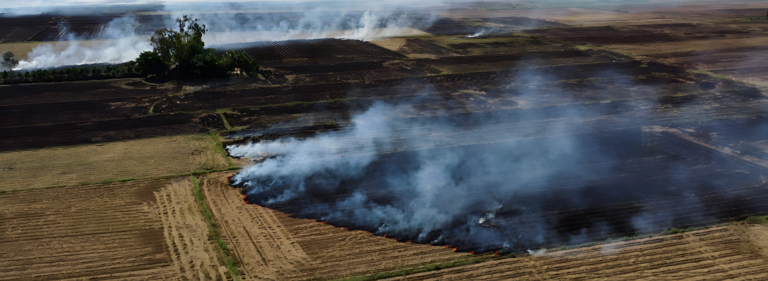
Acting together: Understanding and fostering collective impact are key to the USAID Reducing Pollution project in Vietnam
Phan Thi Nhung, collective impact officer with the USAID Reducing Pollution activity in Vietnam.
In 2020, when I received my master’s degree in climate change from Vietnam National University in Hanoi, I had already been working in the environmental sector on and off for over 10 years. My experiences in health, tourism and education during those years were valuable for many reasons, including that they crystallized for me that environmental protection ─ and more specifically, pollution reduction ─ was really what fueled my passion. So I was very excited to join the USAID Reducing Pollution activity that began in 2021. The five-year project implemented by Winrock fosters locally-driven initiatives and facilitates capacity for local actors and networks to address environmental pollution challenges such as waste management, plastic and air pollution, and wastewater, using a collective impact approach.
“Collective impact” sounded so familiar to me and yet also curious. We are all familiar with slogans like “joining hands for environmental protection” or “fighting climate change together,” however, even after my advanced studies, I was not aware of the existence of formal principles and approaches behind those common slogans until recently. So I did some research, and learned that “collective impact” was first articulated in 2011 in a Stanford Social Innovation Review article from Harvard University’s Kennedy School, and was defined as “a structured approach that brings together a group of actors from across society to solve a complex problem that one actor cannot address on their own.” Simply put, collective impact is action to bring together disconnected efforts to work towards a common goal.
I recalled the Concept Note for USAID’s Local Works for Environmental Health activity, to which I wrote a response two years ago, before learning about the collective impact approach. In that note, “collective actions,” “collective activities,” and “collective network of local actors” were mentioned many times, but I didn’t fully understand the approach behind these words. I realized that nongovernmental organizations and others working in Vietnam may have designed project activities or planned projects around collective impact, without realizing that it is a formal approach to engaging stakeholders from the central to local level, from the government to the private sector and across communities. This may explain the reality that despite the remarkable successes in creating alliances among multiple stakeholders in Vietnam, obstacles still remain when striving for sustainability after donor-funded programs close.
Knowing and understanding the formal collective impact approach is very beneficial for organizations and programs in Vietnam in general and for initiatives on reducing pollution in particular. Specifically, the five key factors of the collective impact approach which our USAID Reducing Pollution activity will be working on over the next five years, together with our partners and grantees, are: 1) developing a common agenda; 2) using a shared measurement system; 3) mutually reinforcing activities; 4) maintaining continuous communication; and 5) paying attention to backbone support for creating long-term collective impact.
With the aim to bring about measurable impacts of pollution reduction, the Reducing Pollution activity is currently analyzing environmental challenges in Vietnam to identify the sectors in which our project can facilitate the greatest collective impact. To start, we know that each collective impact initiative will be led by a local organization, which will serve as the “backbone organization,” to lead a series of connected activities to address a key pollution issue while developing a network of motivated stakeholders from communities, local government, and the private sector. These stakeholders will work together to identify solutions to the pollution challenge.
Reducing pollution itself is a long journey which necessitates continued and sustained actions, which are impossible to achieve through individual efforts only. So, my friends! JOIN WITH US whether you understand our collective impact approaches or not, and whether you have taken pollution-reduction activities before, or not. We need you to join us to go farther, together, in Vietnam’s Reducing Pollution journey.
Acting Together, Reducing Pollution!
Phan Thi Nhung, collective impact officer with the USAID Reducing Pollution activity in Vietnam, has worked as a deputy project manager with the Asian Management and Development Institute, a project coordinator with the Vietnam Industrial Pollution Management Project, and an international cooperation officer with the Centre for Environmental Monitoring in the Vietnam Environment Administration.
Related Projects

